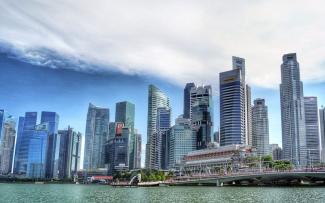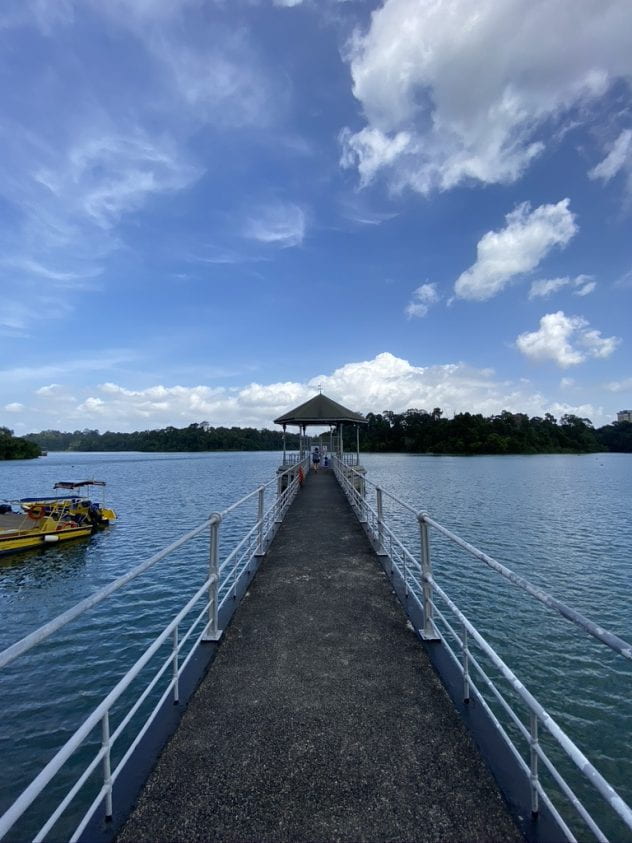Water Sustainability in Singapore

Water is a clear substance that we cannot live without. Despite the amount of water we may believe is in our environment, only 2.5% is fresh water. Of that, two-third is locked in polar ice caps and glaciers. The remaining 0.5% is usually used for agriculture, industrial and personal use.
However, with our fast increasing population, the demand for crops and agricultural use will increase which will in turn increase water usage. Additionally, more factories being built will result in more water usage and a larger population will need more water for daily tasks like bathing and drinking. Furthermore, through larger meat consumption and cotton production virtual water is being heavily used. The pressured use of water makes recycling water very crucial.
Water crises occur globally including in the European Union, Asia, and the US. These crises can range from extreme droughts to contaminated water. In developing countries like India, villagers travel multiple kilometers on foot to collect a pot of water from common water pumps. This water is not usually treated and is unsafe which can lead to water-borne diseases such as cholera.
I grew up in the tropical island country of Singapore. Singapore is located in SouthEast Asia with a population of only 5.6 million which doesn’t produce any crops on the island. All food products are either air-flown or shipped leading to inflated prices. Additionally, Singapore has no mountains or fast-flowing rivers going through it making water stability difficult.
Singapore took on the challenge to support its extreme water needs of 430 million gallons a day by coming up with a strategy called the Four National Taps which represent four different types of techniques to sustain and recycle water. These include creating water plants, making reservoirs, importing water, and desalinating water.
The first way Singapore renews water is through NEWater. NEWater is a water plant that recycles used water into clean, safe, and reclaimed water. They launched into the Singaporean public in 2003 when they first opened two water plants, a visitor center, and a water Museum. This Museum attracts tourists and shows the company’s water sustainability journey. NEWater has three main stages in purifying the water.
- The first is called microfiltration or ultrafiltration where used water is passed through membranes. This helps to filter out bacteria and gets the water ready for the next stage.
- The second stage is called reverse osmosis where a semipermeable membrane is used. This only allows smaller particles like water to pass through but leaves viruses and other contaminants behind.
- The last and final stage is ultraviolet disinfection which kills any bacteria and viruses present. While at stage 2 the water is safe to drink, this is another protective measure.
NEWater now has five water plants distributed around Singapore and it supplies up to 40% of Singapore’s current water needs. By 2060, it is expected to meet 55% of Singapore’s future water demands.

The second national tap is a reservoir. Reservoirs are essentially artificial lakes that are used as a source of water supply. Singapore has a total of 17 reservoirs island-wide and through its local catchment techniques which span over two-third of the island’s land including drains, canals, and small ponds, rainwater is easily transported into the reservoirs. Reservoirs are gorgeous locations in Singapore that are popular among nature lovers and runners! The Marina reservoir has a surface area of 590 acres and is the most urbanized catchment in Singapore and meets around 10% of Singapore’s water needs.
The next way that Singapore manages its water is through importing water. Singapore has been importing water from its neighboring country Malaysia for a long time now. There are two agreements which have been signed up till now. The first was in 1961 and expired in 2011 and the second was signed in 1962 and will expire in 2061. Under the Johor Bahru agreement, 250 million gallons of water can be drawn every day from Johor Bahru to Singapore. Imported water makes up a majority of Singapore’s needs and covers up to 60%.
The last and final way is through desalinated water. Desalinated water is turning seawater into drinking water using advanced membrane technology. In Singapore there 3 desalination plants and by the end of 2020 there will be 2 new ones. The desalination process is energy-intensive and since Singapore uses reverse osmosis for its desalination 3.5kWh/m3 of energy is used to make seawater safe enough to drink. Seawater is pushed through the membranes to remove dissolved salts and minerals to produce safe drinking water. The Public Utility Board (PUB) in Singapore wants to reduce the amount of energy usage and one way is by using Electro Deionization. This is where an electric field pulls the dissolved salts from the water and only uses 1.65kWh/m3.
While Singapore has many sustainability techniques that many other countries can learn from, it is important that as individuals we do our part as well. While as students and individuals there isn’t a lot we can do for these large crises, there are small activities we can participate in to educate others and attempt to reduce some of the harsh effects of water scarcity.
To help raise awareness about climate change and its negative effects on our environment, I created a climate change club in my school. Due to the Covid-19 pandemic, the club’s sessions couldn’t take place in person so I created an online space where I send presentations to students about important topics such as water scarcity and the causes of climate change. We engage in discussions about conflicting opinions and answer questions, and I note their suggestions for topics they would like to learn more about.
Additionally, I recently acted in and directed a play called ‘The Four Elements’ in my school to promote awareness about sustainability. In the play, I portrayed the four natural elements of nature: wind, water, fire, and earth, and presented the effects on each if climate change continues unabated. It was a creative way to portray my passion for a topical subject and to get my message across to more people.
Even small steps can cumulatively have a big, lasting impact. For example, I have attempted to adopt a zero-waste lifestyle whereby I consume less meat, reduce plastic use, and carry reusable shopping bags. These changes haven’t adversely affected the quality of my life but will surely have a meaningful impact on the environment.
Another main way to reduce water scarcity is water management. Making sure to turn off taps when they aren’t in use and taking more frequent showers rather than baths can make a big difference.
I’m keen to use the techniques I have learned from my home country of Singapore in my future academic research. Water is a resource that is slowly depleting due to being overused. Its shortage can be reduced by factors that we can still do to make a difference. We must educate others and look at Singapore as an enviable role model for sustainable water usage and attempt to manage our water usage better to delay the effects of water scarcity.
- Water Infrastructure Research
- Community Capacity Building & Water Equity

